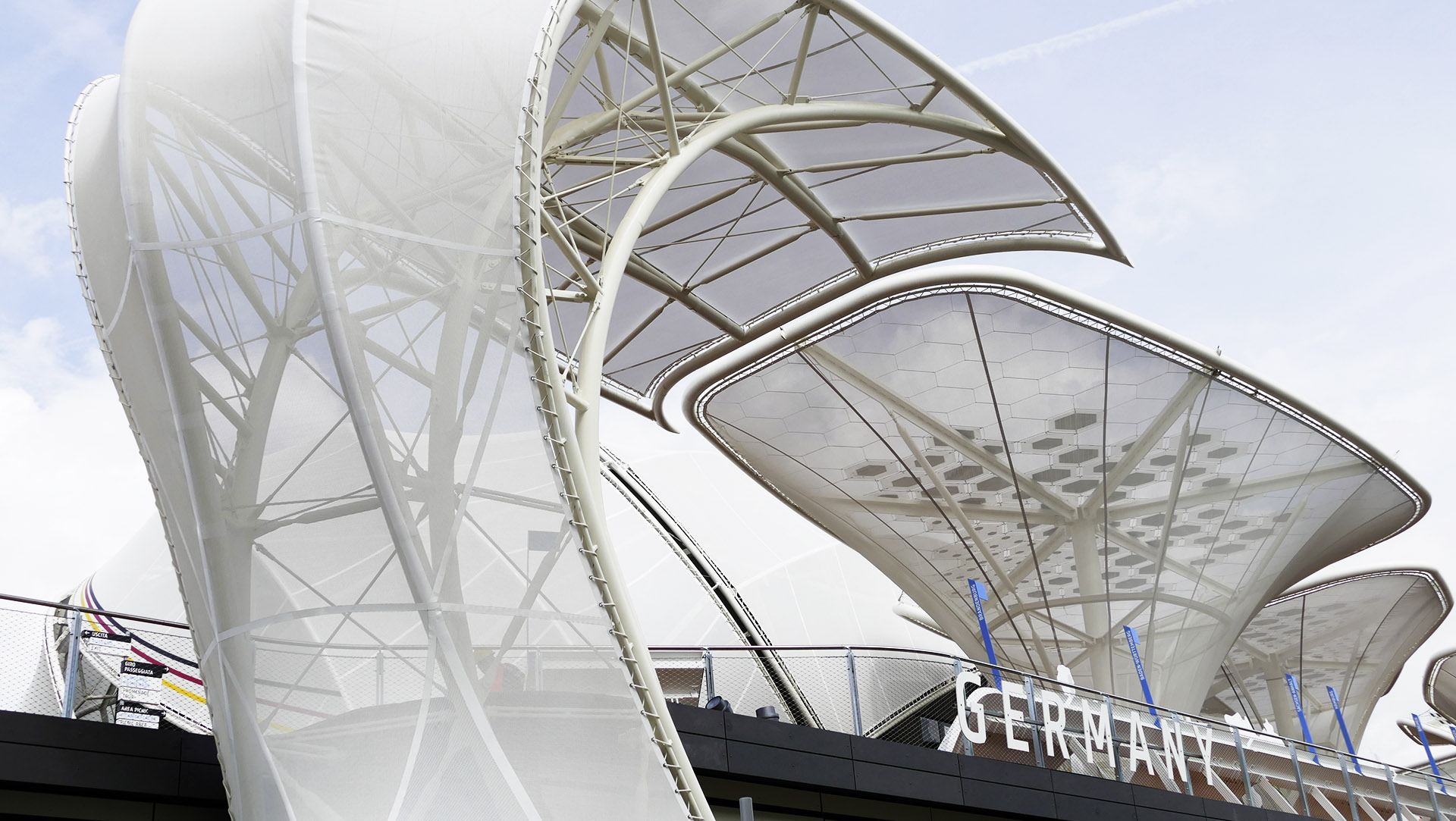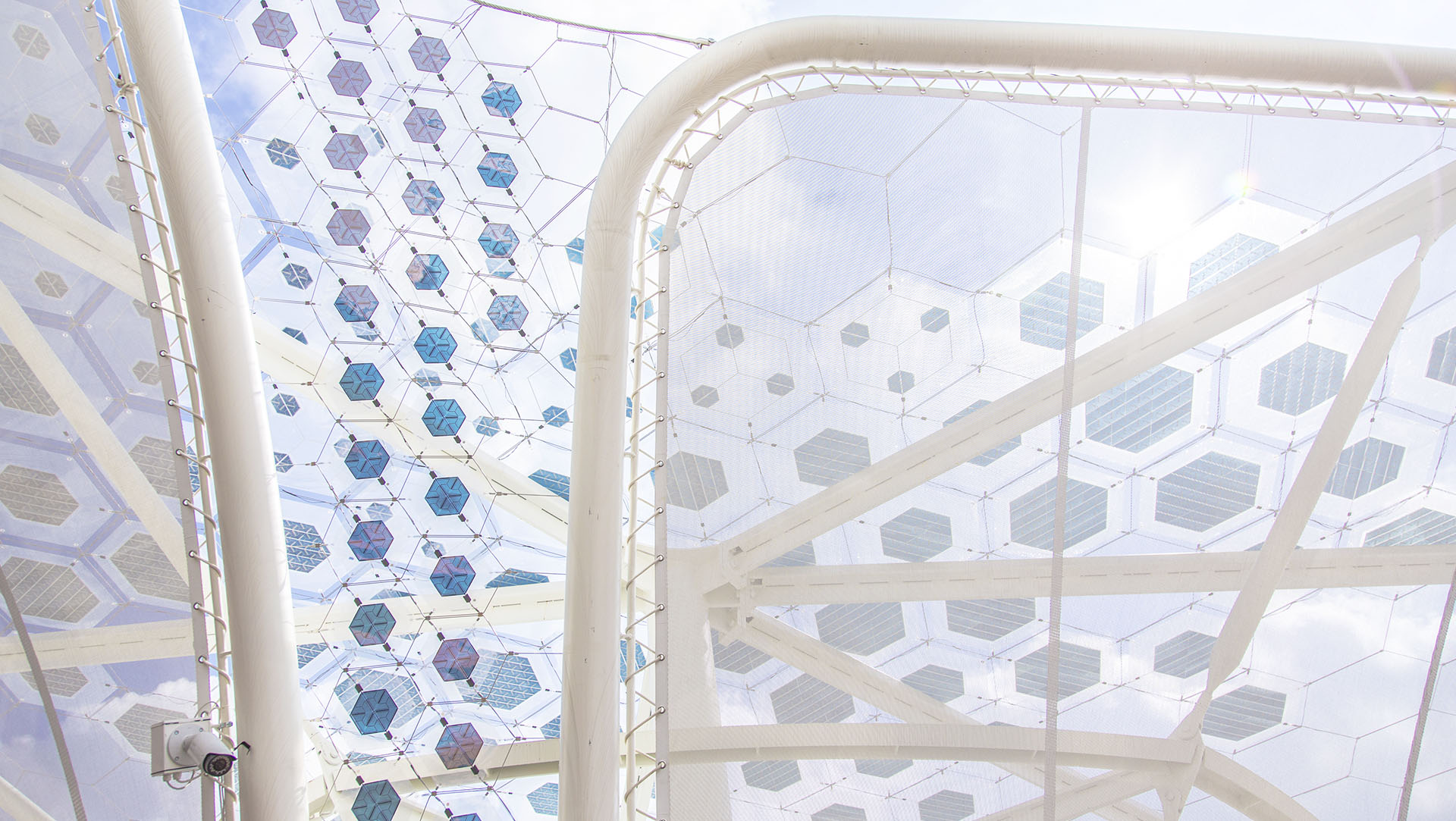REVOLUTIONIZING SOLAR POWER
Façades and roofs offer plenty of space for the climate-friendly generation of electricity from sunlight. And today’s solar cells are also entirely compatible with modern architecture. One example of that is the “solar trees” in the German Pavilion at the Universal Exposition 2015, in Milan. This is the first time that organic photovoltaics have been utilized on a large scale. Merck KGaA, Darmstadt, Germany is providing important components for this system.




